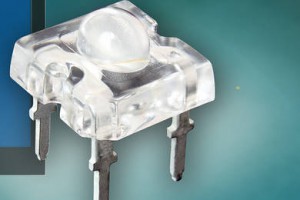Historically, component temperature has been correlated with reliability, with early studies relating field failure rates to steady-state component temperature. More recently, physics-based reliability prediction has related failure rates of electronic assemblies to the magnitude of temperature change over an operational cycle (power-on, power-off, power-on…) and rate of temperature change, both of which are influenced by steady-state operating temperature. Electronics failures ...
Tag Archives: JEDEC
Small top-side cooled automotive mosfets keep heat out of the PCB
Infineon is aiming at automotive power control with a 5 x 7mm top-side cooled surface-mount package, pitching it against the 5 x 6mm bottom-cooled SSO8. The package, SSO10T, has a 10μm gap instead of a thermal pad on the PCB side, and around 95% of heat will leave through the top, according to the company, typically to the ECU housing ...
JEP181: JEDEC standard for thermal simulation
JEP181 from JEDEC is a neutral file XML-based standard for thermal models. The chosen file format is ECXML, for ‘electronics cooling extensible mark-up language’. “A de facto standard for a number of years, ECXML is now published by JEDEC as the JEP181 guideline,” according to Siemens, which participated in the creation of the standard. “The standard was created to meet a ...
Vishay focusses LEDs on gesture recognition
Vishay has developed high-speed high-power IR LEDs for gesture remote control. The 940nm devices emit 40mW/sr of radiant power with 100mA drive over +/-18° vertical and +/-36° horizontal (to half intensity. “The device’s unique angular distribution makes it ideal for gesture remote control of televisions and gaming systems, where it provides excellent spectral matching with silicon photodetectors,” said the firm. ...
Toshiba demonstrates Universal Flash Storage v1.1
Toshiba has demonstration a system supporting version 1.1 of the JEDEC Universal Flash Storage (UFS) standard, claiming it to be a world first. UFS is a specification for embedded flash storage in mobile devices such as phones and tablets. “It represents an evolutionary progression of JEDEC standards in this field, and has been specifically tailored for mobile applications and computing ...
 Electronics Weekly Electronics Design & Components Tech News
Electronics Weekly Electronics Design & Components Tech News


